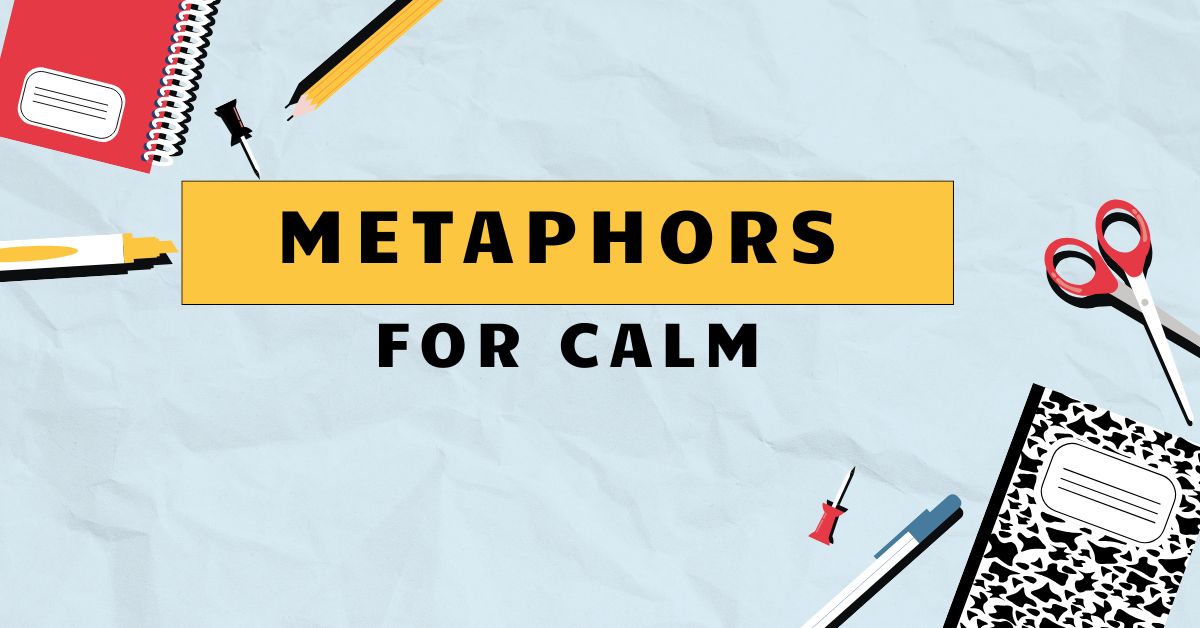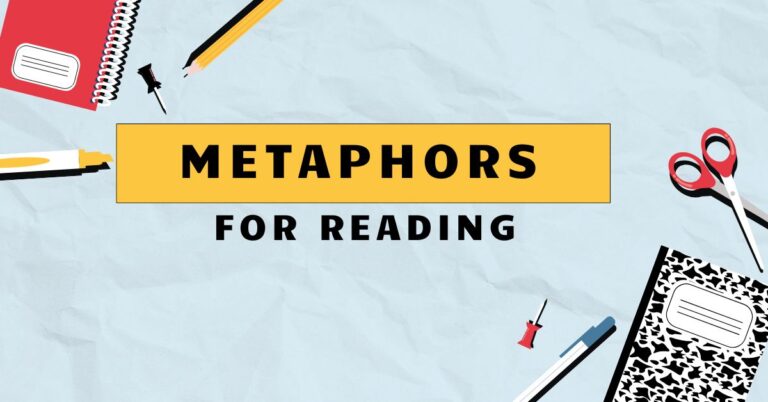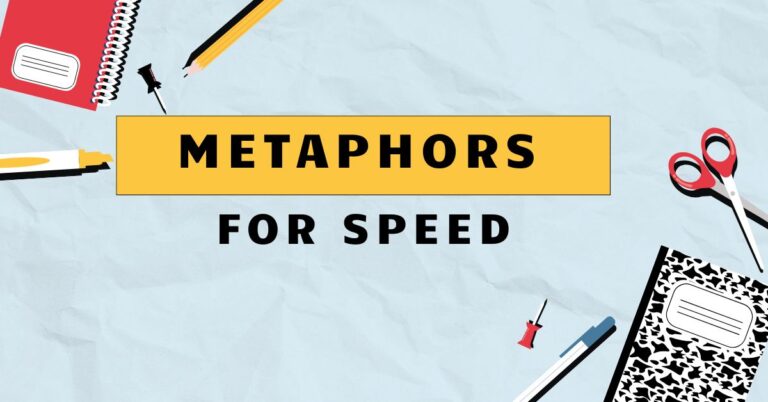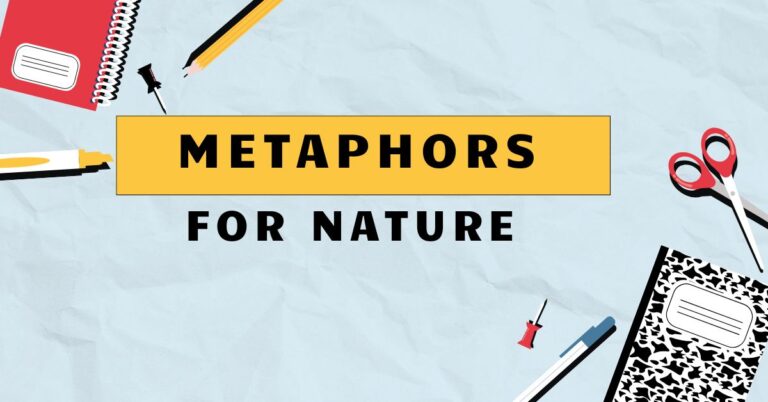41 Metaphors for Calm: Understanding Figurative Language
Understanding metaphors, especially those related to calm, is crucial for enhancing both comprehension and expression in the English language. Metaphors are not merely decorative; they are fundamental to how we understand abstract concepts, allowing us to relate them to more tangible experiences.
This article delves into the world of metaphors for calm, exploring their structure, function, and various types. It is designed for English language learners, writers, and anyone interested in enriching their understanding of figurative language and improving their communication skills.
By mastering these metaphors, you’ll be able to convey tranquility and peacefulness in a more vivid and impactful way.
This guide provides a structured approach to understanding and using metaphors for calm, including definitions, structural breakdowns, types, numerous examples, usage rules, common mistakes, practice exercises, advanced topics, and frequently asked questions. Whether you’re a beginner or an advanced learner, this comprehensive resource will help you master the art of using metaphors to evoke a sense of calmness and serenity in your writing and speech.
Table of Contents
- Definition of Metaphor
- Structural Breakdown of Metaphors
- Types of Metaphors for Calm
- Nature-Based Metaphors
- Water-Related Metaphors
- Weather-Based Metaphors
- Light-Related Metaphors
- Sound-Based Metaphors
- Examples of Metaphors for Calm
- Nature Metaphor Examples
- Water Metaphor Examples
- Weather Metaphor Examples
- Light Metaphor Examples
- Sound Metaphor Examples
- Usage Rules for Metaphors
- Common Mistakes with Metaphors
- Practice Exercises
- Advanced Topics in Metaphor Usage
- Frequently Asked Questions
- Conclusion
Definition of Metaphor
A metaphor is a figure of speech that directly compares two unlike things without using “like” or “as.” It asserts that one thing *is* another, creating a vivid and often surprising connection between them. The purpose of a metaphor is to transfer qualities from one concept (the source) to another (the target), thereby enriching our understanding and perception of the target.
Metaphors are fundamental to language and thought, shaping how we conceptualize abstract ideas. They are used extensively in literature, poetry, everyday conversation, and various forms of communication to add depth, color, and impact.
In the context of “calm,” metaphors help us understand and express this abstract state by associating it with more concrete, sensory experiences. For example, “her voice was a still lake” uses the image of a calm lake to convey the peacefulness and tranquility of the person’s voice.
This allows the audience to grasp the feeling of calm more intuitively and emotionally.
Understanding the function of metaphors is essential for effective communication. They not only enhance the descriptive power of language but also allow us to express complex emotions and ideas in a concise and relatable manner.
By mastering the use of metaphors, especially those related to calm, you can significantly improve your ability to convey nuanced meanings and create a deeper connection with your audience.
Structural Breakdown of Metaphors
Metaphors consist of two primary components: thetenor(or target) and thevehicle(or source). The tenor is the subject being described, while the vehicle is the object or concept used to describe the tenor.
The connection between the tenor and the vehicle is theground, which refers to the shared characteristics or qualities that make the comparison meaningful. Understanding these components helps in both creating and interpreting metaphors effectively.
Let’s break down the metaphor “His mind was a serene garden.” In this case, “his mind” is the tenor, “a serene garden” is the vehicle, and the ground is the shared quality of peace, tranquility, and order. The metaphor suggests that his mind, like a well-maintained garden, is free from chaos and full of peaceful thoughts.
Another important aspect of metaphor structure is the distinction betweendead metaphorsandlive metaphors. Dead metaphors are those that have become so common that they are no longer recognized as metaphors.
For example, “the heart of the matter” is a dead metaphor. Live metaphors, on the other hand, are fresh and original, creating a more vivid and impactful image.
Effective use of live metaphors can significantly enhance the descriptive power of your writing.
Types of Metaphors for Calm
Metaphors for calm can be categorized based on the source domains they draw from. These include nature, water, weather, light, and sound.
Each category offers unique ways to convey the feeling of calmness and serenity.
Nature-Based Metaphors
Nature-based metaphors often evoke a sense of peace and tranquility by comparing calm to natural elements such as forests, mountains, and meadows. These metaphors leverage the inherent association of nature with serenity and stillness.
Water-Related Metaphors
Water-related metaphors use imagery of oceans, lakes, and rivers to describe calm. Still water often represents inner peace, while flowing water can symbolize a gentle, continuous calm.
Weather-Based Metaphors
Weather metaphors associate calm with gentle weather conditions such as a light breeze or a clear sky after a storm. These metaphors highlight the absence of turbulence and the presence of clarity.
Light-Related Metaphors
Light metaphors use imagery of soft, gentle light to represent calm. Dawn, twilight, or a soft glow can symbolize a peaceful and soothing state of mind.
Sound-Based Metaphors
Sound metaphors use quiet, harmonious sounds to evoke a sense of calm. Examples include the gentle rustling of leaves, the soft murmur of a stream, or the distant chime of bells.
Examples of Metaphors for Calm
Understanding the different types of metaphors for calm is enhanced by examining specific examples. The following tables provide a range of metaphors categorized by nature, water, weather, light, and sound, illustrating how each type can be used to convey a sense of tranquility.
Nature Metaphor Examples
Nature metaphors provide a rich source of imagery for describing calm. By drawing parallels between inner peace and natural landscapes, these metaphors can create a vivid and relatable sense of tranquility.
The table below showcases various nature-based metaphors that effectively convey calmness.
| Metaphor | Explanation |
|---|---|
| Her mind was a quiet forest. | Implies a peaceful, undisturbed inner state. |
| His soul was a serene mountain peak. | Suggests a sense of stillness and elevated peace. |
| The meeting was a tranquil meadow. | Conveys a sense of ease and openness. |
| Her presence was a calming grove. | Suggests a place of refuge and peace. |
| His words were a gentle breeze through the trees. | Implies a soothing and refreshing effect. |
| Her thoughts were a field of lavender. | Conveys a sense of fragrant and calming beauty. |
| The atmosphere was a peaceful garden. | Suggests a cultivated and harmonious environment. |
| His spirit was a silent, snow-covered landscape. | Implies a pristine and undisturbed inner peace. |
| Her heart was a still, green valley. | Conveys a sense of deep and abiding tranquility. |
| The room was an oasis of calm. | Suggests a place of refuge and relaxation. |
| His aura was a field of wildflowers. | Implies a natural, effortless beauty and peace. |
| Her laughter was the sound of a babbling brook. | Conveys a sense of gentle, natural joy. |
| The meditation was a walk through a quiet forest. | Suggests a peaceful and introspective experience. |
| His patience was as deep as an ancient forest. | Implies a profound and enduring calm. |
| Her touch was as light as a falling leaf. | Conveys a sense of gentle and unobtrusive peace. |
| The evening was a blanket of peaceful wilderness. | Suggests a comforting and undisturbed atmosphere. |
| His presence was a grounding oak tree. | Implies stability and steadfastness. |
| Her resilience was like a mountain standing strong. | Conveys strength and unwavering peace. |
| The silence was a vast, open plain. | Suggests a sense of boundless peace and freedom. |
| His wisdom was as old as the hills. | Implies a deep and timeless understanding. |
| Her spirit was a soaring eagle above the clouds. | Implies freedom and a perspective of peace. |
| The memory was a serene snapshot of a summer field. | Conveys a sense of joyful and lasting peace. |
| His words were seeds of tranquility planted in my heart. | Suggests a lasting and growing sense of calm. |
| Her smile was the sunrise over a peaceful landscape. | Implies a radiant and hopeful sense of calm. |
| The experience was a journey through a quiet forest. | Conveys a sense of peaceful exploration and discovery. |
| His guidance was a steady hand leading through the woods. | Suggests support and direction towards peace. |
| Her love was a sheltering tree in a storm. | Implies protection and comfort in times of trouble. |
| The feeling was like walking barefoot on soft grass. | Conveys a sense of natural and simple peace. |
| His inner peace was a deep-rooted ancient tree. | Suggests a strong and enduring sense of calm. |
Water Metaphor Examples
Water metaphors are particularly effective in conveying calm, as water is often associated with fluidity, tranquility, and depth. These metaphors can describe both inner states and external environments, providing a versatile way to express calmness.
Below is a collection of water-related metaphors that capture the essence of peace and serenity.
| Metaphor | Explanation |
|---|---|
| Her voice was a still lake. | Suggests a calm, unruffled tone. |
| His mind was a deep ocean of peace. | Implies a profound and boundless inner calm. |
| The meeting was a calm sea. | Conveys a sense of smoothness and lack of conflict. |
| Her presence was a gentle stream. | Suggests a soothing and continuous influence. |
| His words were a soft ripple on the water. | Implies a gentle and calming effect. |
| Her thoughts were a clear, flowing river. | Conveys a sense of clarity and ease. |
| The atmosphere was a tranquil harbor. | Suggests a safe and peaceful environment. |
| His spirit was a serene lagoon. | Implies a secluded and peaceful inner state. |
| Her heart was a calm, deep well. | Conveys a sense of profound and enduring peace. |
| The room was a pool of serenity. | Suggests a place of undisturbed calm. |
| His soul was a quiet cove. | Implies a hidden, peaceful refuge. |
| Her laughter was the gentle lapping of waves. | Conveys a soothing and rhythmic joy. |
| The meditation was a dive into a clear, blue sea. | Suggests a deep and immersive experience of peace. |
| His patience was as endless as the ocean. | Implies a boundless and unwavering calm. |
| Her touch was as light as sea foam. | Conveys a sense of gentle and airy peace. |
| The evening was a blanket of peaceful waves. | Suggests a comforting and serene atmosphere. |
| His presence was a steady lighthouse in a storm. | Implies guidance and stability in times of trouble. |
| Her resilience was like a rock standing firm against the tide. | Conveys strength and unwavering peace. |
| The silence was a vast, underwater world. | Suggests a sense of deep and encompassing peace. |
| His wisdom was as deep as the Mariana Trench. | Implies a profound and unfathomable understanding. |
| Her spirit was a dolphin gliding through the water. | Implies grace and effortless peace. |
| The memory was a serene snapshot of a calm bay. | Conveys a sense of tranquil and lasting peace. |
| His words were droplets of tranquility falling into the soul. | Suggests a gentle and permeating sense of calm. |
| Her smile was the reflection of sunlight on water. | Implies a radiant and joyful sense of calm. |
| The experience was a boat ride on a peaceful lake. | Conveys a sense of serene journey and tranquility. |
| His guidance was a steady hand on the rudder. | Suggests support and direction towards peace. |
| Her love was a harbor sheltering from the storm. | Implies protection and comfort in times of trouble. |
| The feeling was like floating on a calm river. | Conveys a sense of effortless and natural peace. |
| His inner peace was a deep, untouched spring. | Suggests a pure and enduring sense of calm. |
Weather Metaphor Examples
Weather metaphors offer another powerful way to describe calm, by associating it with gentle and clear atmospheric conditions. These metaphors emphasize the absence of turbulence and the presence of clarity, creating a sense of peace.
The following table provides a variety of weather-based metaphors that effectively convey calmness.
| Metaphor | Explanation |
|---|---|
| Her voice was a gentle breeze. | Suggests a soft and calming tone. |
| His mind was a clear, sunny sky. | Implies a bright and untroubled inner state. |
| The meeting was a calm, cloudless day. | Conveys a sense of clarity and ease. |
| Her presence was a soft, warm rain. | Suggests a soothing and nurturing influence. |
| His words were a light shower of comfort. | Implies a gentle and refreshing effect. |
| Her thoughts were a clear, crisp morning. | Conveys a sense of freshness and clarity. |
| The atmosphere was a tranquil twilight. | Suggests a peaceful and serene environment. |
| His spirit was a calm after the storm. | Implies a sense of peace following turmoil. |
| Her heart was a clear, blue horizon. | Conveys a sense of endless and peaceful possibilities. |
| The room was a haven from the storm. | Suggests a place of refuge and peace. |
| His soul was a peaceful, starlit night. | Implies a quiet and comforting inner state. |
| Her laughter was the soft patter of rain on the roof. | Conveys a soothing and comforting joy. |
| The meditation was a journey into a serene sunset. | Suggests a peaceful and reflective experience. |
| His patience was as boundless as the sky. | Implies an unlimited and unwavering calm. |
| Her touch was as light as a snowflake. | Conveys a sense of gentle and delicate peace. |
| The evening was a blanket of peaceful fog. | Suggests a comforting and enveloping atmosphere. |
| His presence was a steady beacon in the fog. | Implies guidance and clarity in times of uncertainty. |
| Her resilience was like a tree standing strong in the wind. | Conveys strength and unwavering peace. |
| The silence was a vast, open sky. | Suggests a sense of boundless peace and freedom. |
| His wisdom was as timeless as the changing seasons. | Implies a deep and enduring understanding. |
| Her spirit was a kite soaring in the breeze. | Implies lightness and effortless peace. |
| The memory was a serene snapshot of a rainbow after the rain. | Conveys a sense of hopeful and lasting peace. |
| His words were drops of dew on a tranquil morning. | Suggests a fresh and revitalizing sense of calm. |
| Her smile was the warmth of the sun on a cool day. | Implies a comforting and joyful sense of calm. |
| The experience was a walk through a gentle rain. | Conveys a sense of cleansing and peaceful renewal. |
| His guidance was a steady hand holding an umbrella. | Suggests support and protection in times of trouble. |
| Her love was a warm fire on a cold night. | Implies comfort and security in times of need. |
| The feeling was like watching clouds drift by. | Conveys a sense of effortless and peaceful observation. |
| His inner peace was a clear and constant breeze. | Suggests a refreshing and enduring sense of calm. |
Light Metaphor Examples
Light metaphors utilize the imagery of soft, gentle light to represent calm. Dawn, twilight, or a soft glow can symbolize a peaceful and soothing state of mind.
These metaphors are effective in conveying a sense of serenity and clarity. The table below provides a variety of light-based metaphors that capture the essence of calmness.
| Metaphor | Explanation |
|---|---|
| Her voice was a soft, golden glow. | Suggests a warm and comforting tone. |
| His mind was a bright, sunlit room. | Implies a clear and illuminated inner state. |
| The meeting was a calm, softly lit space. | Conveys a sense of ease and gentle illumination. |
| Her presence was a gentle, warm light. | Suggests a soothing and comforting influence. |
| His words were a soft beam of hope. | Implies a gentle and uplifting effect. |
| Her thoughts were a clear, bright dawn. | Conveys a sense of freshness and clarity. |
| The atmosphere was a tranquil twilight. | Suggests a peaceful and serene environment. |
| His spirit was a calm, gentle sunrise. | Implies a sense of new beginnings and peace. |
| Her heart was a clear, bright star. | Conveys a sense of guidance and peaceful direction. |
| The room was a haven of soft light. | Suggests a place of refuge and gentle peace. |
| His soul was a peaceful, moonlit night. | Implies a quiet and reflective inner state. |
| Her laughter was the soft flicker of candlelight. | Conveys a warm and comforting joy. |
| The meditation was a journey into a radiant sunset. | Suggests a peaceful and transformative experience. |
| His patience was as boundless as the stars in the sky. | Implies an unlimited and unwavering calm. |
| Her touch was as light as a moonbeam. | Conveys a sense of gentle and ethereal peace. |
| The evening was a blanket of peaceful starlight. | Suggests a comforting and serene atmosphere. |
| His presence was a steady lantern in the dark. | Implies guidance and clarity in times of uncertainty. |
| Her resilience was like a lighthouse shining through the storm. | Conveys strength and unwavering guidance. |
| The silence was a vast, illuminated space. | Suggests a sense of expansive peace and clarity. |
| His wisdom was as timeless as the light of the sun. | Implies a deep and enduring understanding. |
| Her spirit was a firefly dancing in the night. | Implies lightness and joyful peace. |
| The memory was a serene snapshot of a sunlit meadow. | Conveys a sense of bright and lasting peace. |
| His words were rays of sunlight on a tranquil morning. | Suggests a revitalizing and uplifting sense of calm. |
| Her smile was the glow of a warm hearth. | Implies a comforting and joyful sense of calm. |
| The experience was a walk through a sunlit forest. | Conveys a sense of peaceful and illuminated exploration. |
| His guidance was a steady hand holding a candle. | Suggests support and direction in times of darkness. |
| Her love was a beacon shining in the night. | Implies guidance and protection in times of need. |
| The feeling was like basking in the warmth of the sun. | Conveys a sense of effortless and peaceful contentment. |
| His inner peace was a constant, gentle light. | Suggests a consistent and enduring sense of calm. |
Sound Metaphor Examples
Sound metaphors use quiet, harmonious sounds to evoke a sense of calm. Examples include the gentle rustling of leaves, the soft murmur of a stream, or the distant chime of bells.
These metaphors are particularly effective in creating a sensory experience of tranquility. The table below provides a variety of sound-based metaphors that capture the essence of calmness.
| Metaphor | Explanation |
|---|---|
| Her voice was a soft, soothing melody. | Suggests a calming and harmonious tone. |
| His mind was a quiet symphony of thoughts. | Implies a harmonious and peaceful inner state. |
| The meeting was a calm, hushed gathering. | Conveys a sense of ease and quiet understanding. |
| Her presence was a gentle, soft murmur. | Suggests a soothing and comforting influence. |
| His words were a quiet chime of wisdom. | Implies a gentle and enlightening effect. |
| Her thoughts were a clear, resonating bell. | Conveys a sense of clarity and purity. |
| The atmosphere was a tranquil, silent space. | Suggests a peaceful and undisturbed environment. |
| His spirit was a calm, gentle humming. | Implies a sense of quiet contentment and peace. |
| Her heart was a clear, resonant tone. | Conveys a sense of profound and peaceful resonance. |
| The room was a sanctuary of quiet sounds. | Suggests a place of refuge and gentle peace. |
| His soul was a peaceful, silent song. | Implies a quiet and harmonious inner state. |
| Her laughter was the soft tinkling of bells. | Conveys a joyful and lighthearted peace. |
| The meditation was a journey into a serene silence. | Suggests a peaceful and reflective experience. |
| His patience was as boundless as the echo in a canyon. | Implies an unlimited and enduring calm. |
| Her touch was as light as the whisper of the wind. | Conveys a sense of gentle and ethereal peace. |
| The evening was a blanket of peaceful quiet. | Suggests a comforting and serene atmosphere. |
| His presence was a steady drumbeat of reassurance. | Implies grounding and stability in times of uncertainty. |
| Her resilience was like a strong, silent chord. | Conveys strength and unwavering peace. |
| The silence was a vast, echoing chamber. | Suggests a sense of expansive peace and tranquility. |
| His wisdom was as timeless as the sound of the ocean. | Implies a deep and enduring understanding. |
| Her spirit was a gentle flute playing in the breeze. | Implies lightness and melodic peace. |
| The memory was a serene snapshot of birdsong at dawn. | Conveys a sense of joyful and lasting peace. |
| His words were notes of harmony on a tranquil evening. | Suggests a soothing and uplifting sense of calm. |
| Her smile was the gentle hum of contentment. | Implies a comforting and joyful sense of calm. |
| The experience was a walk through a silent forest. | Conveys a sense of peaceful and introspective exploration. |
| His guidance was a steady voice in the quiet. | Suggests support and direction in times of uncertainty. |
| Her love was a lullaby soothing the soul. | Implies comfort and peace in times of need. |
| The feeling was like listening to a gentle rain. | Conveys a sense of effortless and peaceful relaxation. |
| His inner peace was a constant, quiet rhythm. | Suggests a consistent and enduring sense of calm. |
Usage Rules for Metaphors
Using metaphors effectively requires attention to several rules. First, ensure the comparison is meaningful and clear.
The connection between the tenor and the vehicle should be logical and easily understood by the audience. Avoid mixed metaphors, which combine unrelated images and create confusion.
For example, avoid phrases like “climbing the ladder of success while sailing through life’s storms,” as ladders and sailing are unrelated concepts.
Second, consider the context and audience. A metaphor that works well in one situation may not be appropriate in another.
Be mindful of cultural differences and ensure the metaphor resonates with your intended audience. Overuse of metaphors can also diminish their impact, so use them judiciously to highlight key points.
Third, maintain consistency within the metaphor. Once you establish a metaphorical comparison, stick to it throughout the passage.
Avoid introducing conflicting imagery that disrupts the coherence of the metaphor. For instance, if you describe someone’s mind as a “garden,” continue with imagery related to plants, growth, and cultivation.
Common Mistakes with Metaphors
One common mistake is using clichéd or overused metaphors. These metaphors, such as “heart of gold” or “needle in a haystack,” have lost their impact and can make your writing sound unoriginal.
Instead, strive to create fresh and imaginative metaphors that provide a unique perspective.
Another mistake is creating mixed metaphors, which combine unrelated images and create confusion. For example, saying “He was burning the midnight oil to climb the corporate ladder” mixes the images of burning oil and climbing a ladder, resulting in a nonsensical comparison.
A third mistake is using metaphors that are too obscure or complex for the audience to understand. The purpose of a metaphor is to clarify and enhance understanding, so ensure the comparison is accessible and relatable to your readers.
Here are some examples of common mistakes and their corrections:
| Incorrect Metaphor | Corrected Metaphor | Explanation |
|---|---|---|
| She was a diamond in the rough sailing through life. | She was a diamond in the rough, waiting to be polished. | Avoids mixing unrelated images. |
| His ideas were a tangled web of spaghetti. | His ideas were a tangled web, difficult to unravel. | Uses a clearer and more logical comparison. |
| The project was a walk in the park, but we had to swim upstream. | The project was a walk in the park, easy and enjoyable. | Maintains consistent imagery. |
| He was a lone wolf navigating a sea of troubles while wearing a heart of gold. | He was a lone wolf navigating a sea of troubles. | Removes clichéd and mixed metaphors. |
| Her mind was a labyrinthine enigma wrapped in a riddle. | Her mind was a complex labyrinth. | Simplifies the metaphor for clarity. |
Practice Exercises
Test your understanding of metaphors for calm with the following exercises. Identify the metaphors and explain their meaning in each sentence.
Exercise 1: Identify the metaphor and explain its meaning.
| Question | Answer |
|---|---|
| 1. His voice was a gentle stream, soothing her worries away. | Metaphor: “a gentle stream.” Meaning: His voice was calming and peaceful. |
| 2. Her mind was a serene garden, free from all chaos. | Metaphor: “a serene garden.” Meaning: Her mind was peaceful and orderly. |
| 3. The meeting was a calm sea, with no waves of disagreement. | Metaphor: “a calm sea.” Meaning: The meeting was peaceful and harmonious. |
| 4. His presence was a soft light, illuminating the room with peace. | Metaphor: “a soft light.” Meaning: His presence brought peace and clarity. |
| 5. Her words were a gentle breeze, whispering comfort to his soul. | Metaphor: “a gentle breeze.” Meaning: Her words were comforting and soothing. |
| 6. The silence was a blanket, wrapping them in a sense of calm. | Metaphor: “a blanket.” Meaning: The silence was comforting and enveloping. |
| 7. His patience was a deep ocean, unperturbed by the storms of life. | Metaphor: “a deep ocean.” Meaning: His patience was profound and unwavering. |
| 8. Her spirit was a mountain, standing tall and serene amidst the chaos. | Metaphor: “a mountain.” Meaning: Her spirit was strong and peaceful. |
| 9. The meditation was a quiet forest, inviting her to find inner peace. | Metaphor: “a quiet forest.” Meaning: The meditation was peaceful and introspective. |
| 10. His guidance was a lighthouse, showing her the way through turbulent times. | Metaphor: “a lighthouse.” Meaning: His guidance provided clarity and direction. |
Exercise 2: Create your own metaphors for calm using the given prompts.
| Prompt | Your Metaphor |
|---|---|
| 1. Describe a peaceful morning. | The morning was a canvas painted with the soft hues of dawn, each stroke a promise of tranquility. |
| 2. Describe a calming voice. | Her voice was a gentle stream, flowing over smooth stones, each word a ripple of serenity. |
| 3. Describe a serene mind. | His mind was a quiet temple, a sanctuary of stillness where thoughts knelt in peaceful contemplation. |
| 4. Describe a peaceful place. | The garden was a secret world, a verdant embrace where the air hummed with the quiet songs of nature. |
| 5. Describe a calming touch. | Her touch was a feather’s caress, a whisper of peace that settled on his skin like morning dew. |
Advanced Topics in Metaphor Usage
Advanced metaphor usage involves understanding how metaphors can shape thought and influence perception. Conceptual metaphors, such as “time is money” or “arguments are war,” are pervasive in language and thought, influencing how we understand abstract concepts.
By recognizing these underlying metaphors, you can gain a deeper understanding of how language shapes our worldview.
Another advanced topic is the use of extended metaphors, where a single metaphor is developed and elaborated throughout a piece of writing. This can create a powerful and cohesive effect, but it requires careful planning and execution to avoid becoming strained or repetitive.
Additionally, exploring the cultural and historical context of metaphors can provide valuable insights. Metaphors often reflect the values, beliefs, and experiences of a particular culture, so understanding these nuances can enhance your ability to use metaphors effectively.
Frequently Asked Questions
Conclusion
Mastering metaphors for calm is a valuable skill for anyone looking to enhance their communication abilities. By understanding the structure, types, and usage rules of metaphors, you can effectively convey tranquility and peacefulness in your writing and speech.
Avoid common mistakes, practice regularly, and explore advanced topics to further refine your skills. With dedication and practice, you can harness the power of metaphors to create vivid, impactful, and meaningful expressions of calm.







